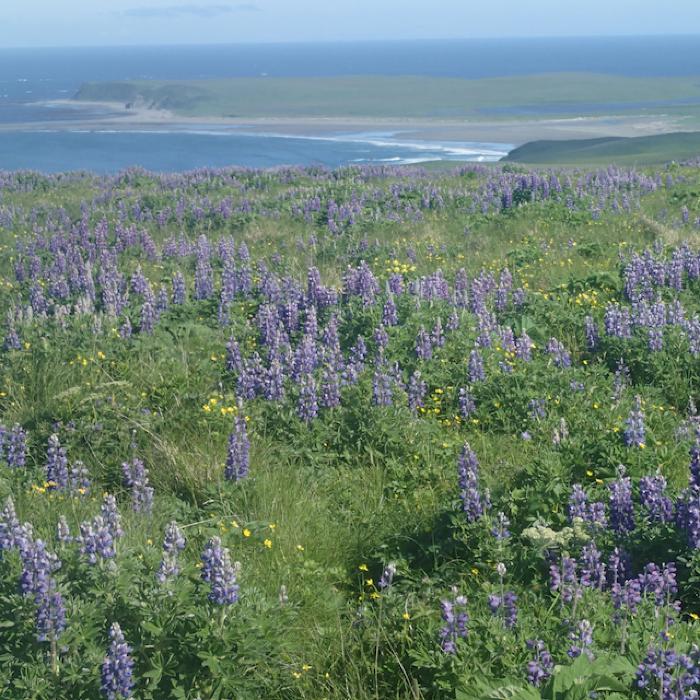Chirikof Island — Ukamuk

Chirikof is an isolated, windy island at the far southern end of the Kodiak Archipelago. This eleven-mile-long, pear-shaped piece of land lies about one hundred miles southwest of Kodiak Island. Archaeological data indicate that the island has long been a crossroads, a place that both Alutiiq and Aleut people occupied for over four thousand years. An Alutiiq legend indicates that the chief of Aiaktalik village once owned the island and that he became wealthy trading resources harvested here.
Westerners sighted the island in 1741. A Russian naval expedition led by Vitus Bering and Alexi Chirikov sailed by, naming it Tumannoi: Foggy Island. Nearly sixty years later, Captain Vancouver renamed the island Chirikof, in honor of Alexi Chirkiov. Chrikof has a rolling, treeless terrain. Although the region provides prime habitat for seabirds and marine mammals, the island has two small streams and one terrestrial mammal, the ground squirrel. Archaeologists believe that people introduced these animals in the prehistoric era. Without predators, other than eagles, the squirrel population thrived.
In the historic era, Alutiiq and Tlingit people worked on Chirikof under Russian supervision. They initially came as seasonal parties, and later lived in the established Ukamuk village. Men hunted sea lions, sea birds, and squirrels. Women fashioned squirrel and bird skins into parkas, which the Russians traded to other Alutiiq people for sea otter pelts. Blue foxes and cattle were introduced later, during the American period.
